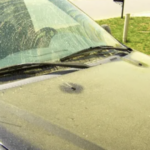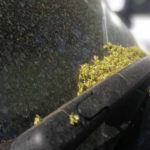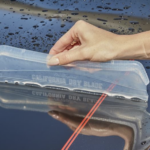Ultimate Guide to Wax and Sealant: Which One Should You Use on Your Vehicle?
When it comes to protecting and enhancing your vehicle’s paintwork, there are two primary options that often come up: car wax and paint sealant. While both serve a similar purpose—protecting your vehicle’s finish—there are significant differences between the two. Choosing the right one for your car can be challenging, especially when you want to maintain a lasting shine and protection against the elements.
In this ultimate guide, we’ll explore the ins and outs of wax and sealant, highlight their pros and cons, and help you make an informed decision. By the end of this article, you’ll know exactly which product best suits your vehicle and its unique needs.
Understanding Car Wax
Car wax has long been the go-to option for vehicle owners who want a glossy, deep shine. It’s typically made from natural ingredients, such as carnauba wax, or synthetic polymers that mimic the effects of natural wax. Car wax works by bonding to the top layer of your vehicle’s paint, creating a thin protective barrier.
Pros of Car Wax
- Natural Shine: One of the main advantages of using wax is the deep, wet-look shine it provides. Many car enthusiasts swear by the mirror-like finish that wax can achieve. If you’re after a high-gloss, showroom-worthy shine, wax is often the preferred choice.
- Ease of Application: Waxing your car is relatively simple. For those who enjoy hands-on car maintenance, applying wax is a satisfying, straightforward process that doesn’t require any specialized tools or equipment.
- Water Repellent: Wax offers decent hydrophobic properties, meaning it helps water bead up and roll off your car’s surface. This can help prevent water spots and minimize the accumulation of grime.
Cons of Car Wax
- Durability: Unfortunately, the protective layer of wax doesn’t last as long as sealant. Wax typically wears off within a few weeks to a couple of months, especially if exposed to harsh weather or frequent washes. It requires regular reapplication to maintain its effects.
- Vulnerability to Heat: While wax provides protection against water, it is less resistant to heat and the sun’s rays. Over time, high temperatures can break down the wax, leading to diminished protection and a loss of shine.
- Frequent Reapplication Needed: As mentioned earlier, wax wears off more quickly than sealant. If you live in an area with intense sunlight or frequent rain, you’ll need to apply wax more often to maintain its benefits.
What is Paint Sealant?
Paint sealant is a synthetic product designed to provide longer-lasting protection than traditional wax. It’s typically made from advanced polymers that bond with your vehicle’s clear coat to form a durable, protective layer. Unlike wax, which sits on top of the paint, sealant chemically bonds to the paint surface, providing a more resilient layer of protection.
Pros of Paint Sealant
- Long-Lasting Protection: One of the standout benefits of paint sealant is its durability. Sealants last much longer than wax, with some products offering protection for up to six months. This makes them ideal for busy individuals who don’t have the time to reapply frequently.
- Superior Protection: Sealants provide excellent protection against the elements, including UV rays, dirt, salt, and harsh weather. The polymer-based formula creates a stronger bond with the paint, offering enhanced resistance to environmental contaminants.
- More Hydrophobic Properties: Sealants typically have better water-repelling abilities compared to wax. They form a slicker surface that makes it harder for water and contaminants to stick, leading to a cleaner finish and easier maintenance.
- Better for Harsh Environments: If you live in an area that experiences extreme weather conditions, such as intense sun, rain, or snow, a paint sealant will provide more effective protection for your vehicle’s paint.
Cons of Paint Sealant
- Less Glossy Finish: While sealant offers excellent protection, it doesn’t deliver the same high-gloss shine as wax. It provides more of a sleek, reflective look, which some people find less visually appealing compared to the rich, deep shine that wax offers.
- More Complex Application: Applying paint sealant requires a bit more effort and expertise compared to waxing. The process may involve using special equipment, like a dual-action polisher, to ensure even coverage and maximum protection.
- Higher Cost: Paint sealants are typically more expensive than wax, both in terms of the initial cost and the cost of application. However, the added protection may justify the higher price, particularly if you want to reduce the frequency of reapplication.
Wax vs. Sealant: Which One Is Right for You?
When deciding between wax and sealant, there are several factors to consider. Your location, the climate, your preferences for shine and protection, and the amount of time you’re willing to spend on maintenance will all play a role in your decision.
Climate Considerations
If you live in a region with high humidity, such as Orlando, Florida, or other places with intense rainfall and harsh sun, a paint sealant may be the better choice. Its ability to withstand extreme weather conditions, including UV rays and heavy rain, makes it perfect for protecting your car’s paint in areas where the environment can be particularly demanding.
On the other hand, if you live in a more temperate climate where the weather is less extreme, car wax might provide the ideal balance of protection and aesthetic appeal. Wax’s glossy finish can enhance your vehicle’s appearance, and it’s relatively easy to reapply.
Frequency of Application
If you’re looking for a low-maintenance solution, paint sealant is your best bet. Its long-lasting protection means you won’t have to reapply it as often, saving you both time and effort. Wax, while easy to apply, requires regular reapplication to keep its protective effects intact.
The Desired Finish
For some car enthusiasts, nothing beats the glossy, wet-look shine that car wax provides. If your top priority is aesthetics and you don’t mind applying wax more frequently, wax may be the perfect choice. If, however, you’re more concerned with durability and longevity, and you can sacrifice a bit of shine, paint sealant might be a better fit.
Combining Wax and Sealant for Maximum Benefits
In some cases, car owners choose to combine both wax and sealant for a balanced approach. Applying a layer of sealant for long-lasting protection and then topping it with a layer of wax for added shine can deliver the best of both worlds. This hybrid method combines the durability of sealant with the deep gloss of wax, ensuring your car looks great while being protected for longer.
Conclusion
When it comes to protecting your vehicle’s paint and ensuring a beautiful finish, both wax and sealant offer distinct benefits. Wax is great for achieving a deep, glossy shine, while sealant provides superior, long-lasting protection. Your choice depends on your priorities: Do you value high-gloss shine and frequent application, or do you prefer durability and low-maintenance upkeep?
At Orlando Detailing, we understand the importance of preserving your vehicle’s finish, which is why we offer both wax and sealant options tailored to your needs. Whether you’re looking for a quick shine or long-lasting protection, we’ve got you covered. Our experienced technicians will help you choose the best solution for your car and ensure it’s applied with the highest level of care and precision.
If you’re in the Orlando area and want to keep your vehicle looking its best, reach out to us today at Orlando Detailing. We’ll provide professional detailing services that ensure your car is both stunning and protected.
Leave a Comment Cancel Comment
Book Orlando Mobile Detailing
Search
Latest Post
-
 The Cost of Neglect: Why Regular Aircraft Detailing Saves Money in the Long Run
February 14, 2025
The Cost of Neglect: Why Regular Aircraft Detailing Saves Money in the Long Run
February 14, 2025
-
 Why Car Washes Aren’t Enough to Combat Pollen Damage
February 13, 2025
Why Car Washes Aren’t Enough to Combat Pollen Damage
February 13, 2025
-
 Orlando’s Pollen Problem: When Is It the Worst and How It Affects Your Car
February 13, 2025
Orlando’s Pollen Problem: When Is It the Worst and How It Affects Your Car
February 13, 2025
-
 How Ozone Generators Eliminate Stubborn Car Odors in Orlando
February 12, 2025
How Ozone Generators Eliminate Stubborn Car Odors in Orlando
February 12, 2025
-
 Why a Water Blade and Chamois Beat Towels Every Time!
February 9, 2025
Why a Water Blade and Chamois Beat Towels Every Time!
February 9, 2025
